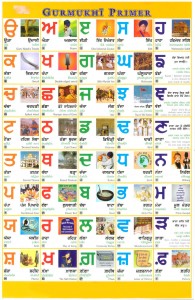
Over the weekend, a wave of bombs targeting civilians was unleashed in the Indian capital of Delhi. With the death toll rising (so far approximately 30), a group called the “Indian Mujahadeen” has been widely reported by the media as having claimed responsibility. This was not the first time the Indian people has seen such attacks.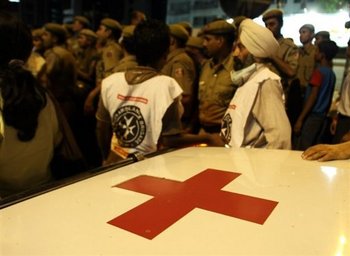 In fact, this was the third such wave this year alone.
In fact, this was the third such wave this year alone.
While families are mourning the loss of their loved ones, I can only express grief for their loss. I have read about individual acts of heroics:
“Last night was spent running from one department to the other looking for my son who had gone to Gaffar Market with his friends when the blast took place. He was injured and was helped by a young Sikh who brought him to the hospital on his scooter and later called us to inform that my son was injured. I did not even get a chance to thank the good Samaritan properly,” said Mohammed Ahmed. He said he was happy that his son was alive. [link]
However, soon afterwards, I have read some of the scariest reports of all. With people still in grief, fascists within the Indian state have not hesitated to hope for a sort of declaration of martial law over the entire country.
 Is the BBC biased towards creating religious programs focused predominantly on Islam versus other faiths? Apparently so, according to Hindu and Sikh leaders in the UK who claim that a disproportionate number of programs have been made about Islam, at the expense of programs on their own faiths. The Network of Sikh Organizations (NSO) media monitoring group analyzed programs from the BBC’s Religion and Ethics department and claim that since 2001, the BBC has made 41 programs on Islam, five on Hinduism and one on Sikhism.
Is the BBC biased towards creating religious programs focused predominantly on Islam versus other faiths? Apparently so, according to Hindu and Sikh leaders in the UK who claim that a disproportionate number of programs have been made about Islam, at the expense of programs on their own faiths. The Network of Sikh Organizations (NSO) media monitoring group analyzed programs from the BBC’s Religion and Ethics department and claim that since 2001, the BBC has made 41 programs on Islam, five on Hinduism and one on Sikhism.
Indarjit Singh, editor of the Sikh Messenger and a regular contributor to Thought for the Day on Radio 4’s Today programme, said Sikhs felt “brushed aside”. He said: “I think it’s probably unthinking, or inadvertent, but the bias is there. “I do know that within the Sikh community especially there is a feeling of concern over the lack of portrayal of their religion on television.” He added: “Of course it is important to educate non-Muslims about Islam, but it is also important to provide informative, open and respectful programming on all religions.” [link]
The people responsible for commissioning religious programming – whether on radio or television – acknowledge that world events have made a significant impact on their output – be it the death of John Paul II or the terrorist attacks of September 11 and July 7.
“Towelhead” is the title of a forthcoming Warner Brothers movie. The Sikh-American Legal Defense and Education Fund (SALDEF) is not pleased. Today, SALDEF issued a press release in which it states:
“The word ‘towelhead’ is a crude and racist slur that is commonly hurled at Sikhs and has frequently been documented in connection with hate crimes,” said Kavneet Singh, SALDEF’s Managing Director. “Calling a movie ‘Towelhead’ is like calling a movie ‘Nigger’ or ‘Gook,’ and we are shocked that a company like Warner Brothers would even consider using a racial slur as a movie title.”
Public intellectual Patwant Singh observed that Sikh immigrants have “not only prospered in business, industry, and the professions; they are also beginning to participate in the political life” of their adopted homelands. Case in point — Harmeet Kaur Dhillon is currently seeking a seat in the California State Assembly (from the 13th district no less, which covers several prominent San Francisco neighborhoods).
Case in point — Harmeet Kaur Dhillon is currently seeking a seat in the California State Assembly (from the 13th district no less, which covers several prominent San Francisco neighborhoods).
Harmeet’s web site indicates that she has exceptional academic credentials, extensive experience as an attorney, and has been at the forefront of important social issues, especially and including domestic violence in the South Asian community.
Of course, I mention Harmeet’s candidacy here not because of her C.V. or platform, but, let’s face it, because she’s a Sikh. That said, while having more Sikhs in elected public office is important, it does not follow that a Sikh should be supported simply because he or she is Sikh.
Many of you may have already heard about the shooting that occurred on Sunday afternoon at the Sacramento Sikh Society Sports Complex, next to the gurdwara. A cricket match, part of a sports festival, was being held when an ongoing argument took a fatal turn. So far, I’ve seen no news of the substance of the dispute. But the result left Paramjit Pamma Singh (name misreported?) dead, and an unnamed 38 year old man with a leg wound. [link]
Gurpreet Singh Gosal, 24, of Indianapolis, was arrested and booked into Sacramento Main Jail Monday morning for the murder of Parmjit Pamma Singh, said sheriff spokesman Sgt. Tim Curran… The shooting followed an ongoing argument between the victims, Singh Gosal and a second man, according to investigators. The suspect and the second man opened fire on Pamma Singh and a 38-year-old man as they watched a tournament at the Sacramento Sikh Society Sports Complex in the 7600 block of Bradshaw Road about 1:30 p.m. Sunday, Curran said. Pamma Singh died at the scene. [link]
We must find better ways to resolve our disputes.
Often, I’m proud of how our community quickly takes action when action is necessary, though this weekend’s events illustrate a darker side of this willingness to take initiative. If anyone has more information about the substance of the dispute between the shooters and the victim, please share.
Gurpreet Singh was apprehended by other spectators and athletes who beat him into submission with cricket bats and hockey sticks until the police arrive.
Honor killings — generally understood to constitute an intentional ending of the life of someone who has brought shame on a family or to one’s self due to perceived or actual infidelity, unfaithfulness, or betrayal — regrettably occur in the Sikh community.
Indeed, Sikhs have been charged with engaging in both forms of honor killings. With respect to an honor killing where the family has been allegedly shamed, just days ago Reema discussed the case of Gurparkash Khalsa — a man who heard rumors that his daughter had been impregnated by Ajmer Singh Hothi and, “driven by humiliation over his daughter’s soiled reputation,” now stands accused of killing Hothi. With respect to an honor killing where the self has been allegedly shamed, Jaspal Sohal was “battered to death by her husband with a hammer. He saw killing her as preferable to having her leaving him and ‘damaging his izzat‘ (personal honour).”
The Khalsa matter took place in the United States while the Sohal incident in the United Kingdom. There may be a temptation to think that honor killings are a uniquely “foreign” or immigrant problem that happens to be taking place in Western societies. See for example this article entitled “‘Honor’ killing comes to the US.” But honor killings may be more universal than Western societies may want to admit. In fact, America has a long history of tolerating, at least to some extent, such killings.
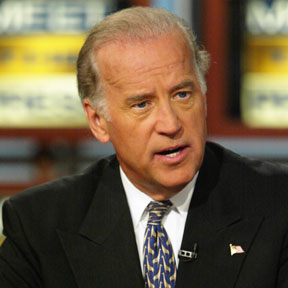 Once again, Indian-Americans have been unwillingly thrust into the heart of a contentious American political battle. For those of you who don’t remember, in 2006, incumbent Senator George Allen singled out and subsequently called an Indian-American, S.R. Sidarth, “macaca” while on the campaign trail. See video here. As The Washington Post’s national political reporter noted, Allen’s use of that slur was a “turning point” in his failed reelection bid, and became “an everlasting part of the political landscape.”
Once again, Indian-Americans have been unwillingly thrust into the heart of a contentious American political battle. For those of you who don’t remember, in 2006, incumbent Senator George Allen singled out and subsequently called an Indian-American, S.R. Sidarth, “macaca” while on the campaign trail. See video here. As The Washington Post’s national political reporter noted, Allen’s use of that slur was a “turning point” in his failed reelection bid, and became “an everlasting part of the political landscape.”
Just a few days ago, presumptive Democratic nominee Barack Obama selected fellow Senator Joe Biden to serve as his running mate. In 2006, Senator Biden said, “In Delaware, the largest growth of population is Indian-Americans, moving from India. You cannot go to a 7-Eleven or a Dunkin’ Donuts unless you have a slight Indian accent.” See video here.
Senator Obama’s decision has generated renewed interest in the 7-Eleven gaffe. See, e.g., here and here. The question is, should we care? In this post, I argue “yes.”
While those in the diaspora are less likely to follow, many in South Asia have had one eye on the Beijing Olympics and the other looking at the current situation in Kashmir.
This past Friday hundreds of thousands of Kashmiri protestors took to the street calling for ‘azadi’ (freedom) from the tyranny of the Indian state. Viewers in India have looked on in surprise and many different reactions can be found in the Indian press. I will highlight one.
For some more context, Al-Jazeera English has some excellent news analysis. It is a bit lengthy, but well-worth the watch:

A few days ago Sikhnet News posted a story about the Dastarbandi/Pagri di Rasam/Turban Tying Ceremony of Harmanas Singh, a 16 year old young man in California. 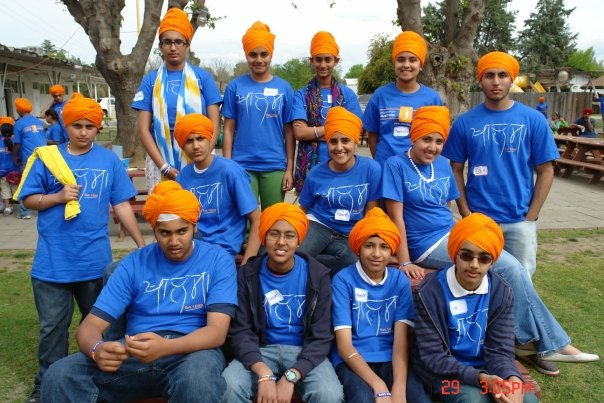 While the story gave only a brief explanation for the ceremony it got me thinking about the significance of the ceremony in the Sikh community in general: why we perform the ceremony, how wide spread it is, and how it pertains today to Sikh women.
While the story gave only a brief explanation for the ceremony it got me thinking about the significance of the ceremony in the Sikh community in general: why we perform the ceremony, how wide spread it is, and how it pertains today to Sikh women.
A couple of websites describe the ceremony like this:
People who have lived in India would know the turban tying ceremony known as Rasam Pagri (Turban Tying Ceremony). This ceremony takes place once a man passes away and his oldest son takes over the family responsibilities by tying turban in front of a large gathering. It signifies that now he has shouldered the responsibility of his father and he is the head of the family. [Source]
The explanation is a bit off –because the ceremony seems more for the passing of personal rather than family responsibility. While there may have been a time when the ceremony signified the passage of family leadership – I think in the Sikh faith the ceremony has come to signify the shouldering of personal responsibility for young Sikhs. The dastarbandi ceremony represents something different for Sikhs – it is as Guru Gobind Singh intended it – a stamp of identity for Sikhs and the responsibilities that being a Sikh entail.
I remember going to Nagar Kirtans and being awed by those doing Gatka (i.e. Sikh martial arts)! Their “performances” were eye-catching with action, discipline, determination, and spirituality. Watching Gatka helped me connect with Sikh history at a time when there were little resources around me to learn about Sikhi. This martial art gave me some insight into the concept of a “saint-solider” – one who exemplifies Miri/Piri (spiritual/temporal power). I got to see how a saint-solider physically fought to defend Sikhi.
Lately, I have heard people ask, “Is Gatka a “performance” or a “martial art”? I think the “performance” part of the question comes from those who think Gatka is being done more to please crowds than spiritually connect with Sikhi. Also, some think Gatka techniques are being compromised in order for it to be more “safe” for crowd performances? I personally think, Gatka is both a performance and a marital art, but that does not mean spirituality or technique has to be compromised. What do others think?
A recent BBC show on Gatka addressed how it is becoming a way for Diasporic youth to connect to their Sikh heritage, while focusing on physical fitness. It also touches on non-Sikhs participating in Gatka. Let us know what you think!
p.s. I have always found it empowering to see Sikh girls participating in Gatka, even though I rarely see women on Gurdwara management committees!
While the young Sikh filmmakers are probably preparing for the annual Sikhnet Youth Film Festival (have you seen their ad on satellite television, it is very impressive!), I recently came across some internet announcements for a list of fascinating Canadian-produced short films that I hope will galvanize future discussions.
Although I must confess, at this point, I have NOT seen any of them, still, I wanted to highlight them and hear back from the Langa(r)eaders about their thoughts. Hopefully some of our more vocal Canadian Langa(r)eaders will give us first voice about the films: P.Singh, yes even kaptaan, and others.
Me, Masi, and Mr. Clean
The description from the film’s website is quite poignant:
Eleven year old Seema has issues with her skin colour. Surrounded by the white kids of her community, and inundated by her masi’s (aunt) opinion that fair skin is better, Seema resorts to drastic measures to bleach her skin.
Seema mistakenly believed that using Mr. Clean on her skin will lead to a fairer, more beautiful colour. When Seema ends up in the hospital an unsuspecting character helps her understand skin colour isn’t what defines the person – it’s what’s beneath that counts[link]
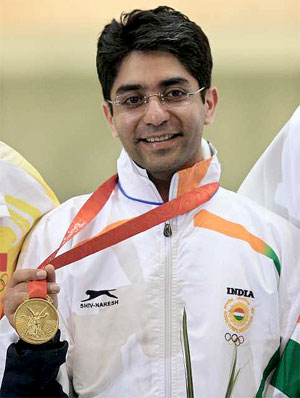 Today Abhinav Bindra won the first individual gold medal ever claimed by any Indian Olympian. He competed in and won the 10M air rifle event this morning in Beijing. We originally posted about him a few days ago here.
Today Abhinav Bindra won the first individual gold medal ever claimed by any Indian Olympian. He competed in and won the 10M air rifle event this morning in Beijing. We originally posted about him a few days ago here.
Abhivan hails from Chandigarh, Punjab and is the son of Dr. A.S. Bindra and Babli Bindra. Abhivan has been training since childhood as a shooter and is a holder of the Khel Ratan Award, India’s highest athletic honor. This is his second time at the Olympics.
His family had gathered at the Sector 8 Gurdwara in the three days preceding his competition for an Akhand patth sahib thanking Waheguru for his success and praying for a win. After hearing that his son had won the gold, Dr. A.S. Bindra proclaimed:
My son has proved that ‘Singh is King’ in a real sense. He has brought laurels for the whole Sikh community and for the whole nation…
——-
As an aside – for those of you wondering, as I was, what his name means – it means “quite new”
Also just found a link to Abhinav’s personal blog
Langa(w)riters have posted in the past on issues surrounding the preservation of the Panjabi language here, here, and here. Be it anywhere from Panjab to North America, the preservation of the Panjabi language is intimately tied to the preservation of a Panjabi and Sikh heritage. For example, in a recent article on Live Oaks High School offering Panjabi courses, Mohinder Singh Ghag, director of Live Oaks Schools Foundation stated:
“The language is the only reason we have a link to our ancestors.”
Thus, the discussion around solutions has understandably centered around learning Panjabi in homes, gurdwaras, high schools and universities. I personally think having these learning opportunities available at all these different sites is a much-needed step towards maintaining the Panjabi language. I have always found the process of getting Panjabi classes taught in high schools particularly interesting because of how they require engaging the community, the reasons for creating them, and how they are incorporated into the public K-12 educational system.
For example, commendably in Live Oaks, California (located about 10 miles north of Yuba City, California):
Punjabi community members knocked on doors and made announcements in temples to get teenagers to sign a petition expressing interest in a Punjabi language class at Live Oak High School.
About 25 students signed-up.
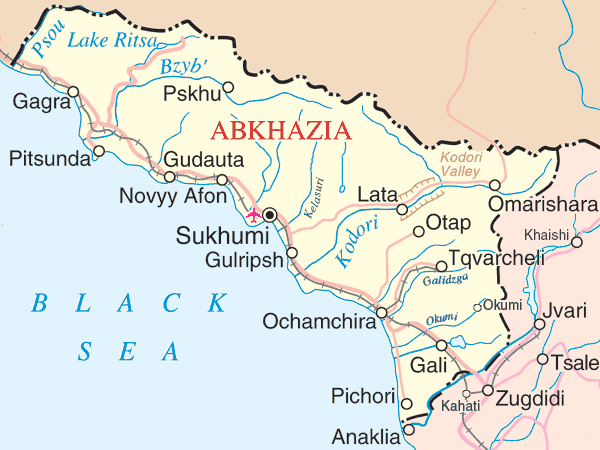
Like many, my family and I watched the opening ceremonies of the Olympics last night. In the middle of the parade of nations, the commentators off-handedly remarked that the country of Georgia had just been invaded by Russia, over an escalated territorial dispute (note that this region of the former-USSR has been the stage for other battles over nation and territory; the Chechen Republic is a close neighbor of Georgia on its northern border). Russia has launched a full military campaign involving air and ground troops and targeting the Georgian city of Gori (not located in the disputed region); this has already resulted in civilian injuries and deaths. Georgia has also asked for U.S. assistance in airlifting their troops from Iraq back home.
I can’t confess to know the entire back story; I’m terribly unfamiliar with Abkhazia and had no idea that hostilities had been mounting (beyond the “normal” level) between Georgia and Russia. In reading the NYT coverage this morning, I stumbled across this statement:
Georgian officials said their only way out of the conflict was for the United States to step in, but with American military intervention unlikely, they were hoping for the West to exert diplomatic pressure to stop the Russian attacks.
As familiar as I am with realpolitik, I was alarmed that the only “hope” for stabilization or a stop to the assault was U.S. intervention. This made me reflect on the concept of witness: in times of war, what does it mean to bear witness to an atrocity, but fail to intervene? In times of “peace,” what does it mean to acknowledge that human rights abuses take place, but fail to challenge a system that prioritizes compliance? What does our faith require in these moments? In these moments, what is justice, and what is our duty as a faith community that values justice and freedom?
Updated and extended, August 9
I try not to do this too often, but I realized I may not have adequately contextualized what I was getting at when posting on Hard Kaur. I’ve tried to extend the analysis and conversation below:

I’ve been thinking about Hard Kaur (Taran Kaur Dhillon) a lot lately, primarily because I’ve been flirting with the idea of buying her debut album, Supawoman. Hard Kaur is a tricky personality for me. On one hand, girlfriend has overcome the adversity of her hard knock life as a pioneer in her field. On the other hand, her conflation of Sikh and Punjabi identity, her often unimpressive rapping, and her totally not-Sikhi-friendly lyrics make me reconsider her as a role model. Is she an emblem for Sikh women’s empowerment, or perhaps just a symbol for women of color artists? Her moniker and image are dramatically at odds with one another. So what do we embrace, or eschew, from her, and can we negotiate how this works for young Sikh women?
Many point to HK’s intense image and claim that she is not a Sikh role-model, and others would claim she’s not a particularly good role model for other young women, either. I agree with the former and disagree with the latter (more after the jump).
In these commentary posts, I will be republishing my original writings as well as include pictures of the athletes and the timings of their events.
There will be four Canadian field hockey athletes that come from Punjabi Sikh backgrounds on this year’s Canadian Olympics Team. Our Sikh community’s fearless foursome will all be wearing turbans (pagris) during the Opening Day Ceremonies.
Jathedar of the Akal Takht, Giani Joginder Singh Vedanti, resigned yesterday without providing any real reason for the step down. From reports it seems that the Jathedar was asked to resigned late Monday night 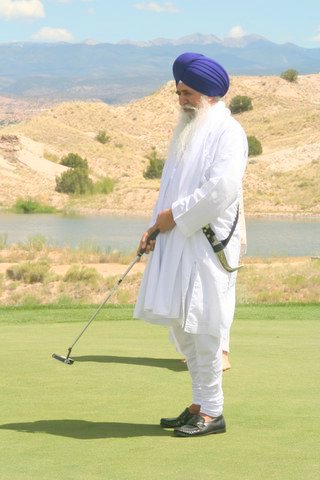 after some SGPC execs visited him at home – the apparent reason: differences of opinion with the Shromini Akali Dal (lead by Badal) and the SGPC (lead by Makkar). In an attempt to cover up the transparently obvious removal, the SGPC president, Avtar Singh Makkar attributed the resignation to Vedanti’s ill health. However, most sources reported something more along these lines:
after some SGPC execs visited him at home – the apparent reason: differences of opinion with the Shromini Akali Dal (lead by Badal) and the SGPC (lead by Makkar). In an attempt to cover up the transparently obvious removal, the SGPC president, Avtar Singh Makkar attributed the resignation to Vedanti’s ill health. However, most sources reported something more along these lines:
It is understood that Vedanti’s increasing proximity with hard liner Sikh organizations on the issue of Dera Sacha Sauda and his public opinion to vote for Sikh Prime Minister Dr. Manmohan Singh during UPA government’s trust vote on July 22 last were key factors that compelled SGPC to pack up Vedanti. The reports said that Punjab Chief Minister Parkash Singh Badal had told Vedanti to quit else he will be expelled.
After reading about Jathedar Vedanti removal and the circumstances, (like many others) I am a bit confused and disturbed with the recent trend – Jathedar Vedanti’s removal is not a first:
The removal of Bhai Jasbir Singh Rode as the Akal Takht Jathedar started the trend of sacking Jathedars. Previously, a Jathedar either resigned or died in office.
Bhai Ranjit Singh, the daring Jathedar of Akal Takht was sacked on April 28,1998 and SGPC installed Giani Puran Singh as the new Jathedar on February 15,1999. Vedanti was appointed as acting Jathedar of Akal Takht on March 28, 2000 after the SGPC then led by Bibi Jagir Kaur blamed Giani Puran Singh of violating the maryada (Sikh code of conduct) and sacked him.
I think what makes this most unsettling is the fact that the Jathedar of the Akal Takht is supposed to be given a certain degree of credibility and authority. The Jathedar is a Sikh leader; someone who represents our interests, is our ambassador, and serves as a guide to Sikhs worldwide. I’m not giving him/her Papal status by any means, but the Jathedar’s position is an executive role within the Panth and removal at the whim and fancy of often corrupt officials in the SGPC or the SAD illegitimates any credibility the position once held. The fact that the last four Jathedars have been “removed” by the SGPC/SAD & Co. says a great deal about the way our Panth is run…little of which can be construed in a positive light.
In case you’ve missed the front page of every major newspaper in the past few days, nearly 150 people died in a stampede in the Naina Devi temple in Himachal Pradesh. (As great of a tragedy as this is, I’m not sure why it’s front page on American newspapers, considering that incidents of this nature occur all too often in India.)
Religious pilgrims were trampled to death on a hillside on Sunday morning, after rumors of a
landslide sparked a stampede, local officials said. Thousands of Hindu pilgrims traveled to Naina Devi, a hilltop temple in the state of Himachal Pradesh, on Sunday during a festival celebrating the Hindu mother goddess. Heavy rains in the morning led many to take cover in a shelter, local officials said. Some eyewitnesses said visitors on their way down the hill claimed large stones began sliding down the hillside, leading to panic in the crowd below, while others heard rumors of a bomb. [link]
In addition to the stampede, deaths were caused by lack of required medical care.
Local clinics were overwhelmed by the injuries and ran short of medicines and supplies. [link]
During this time of tragedy, the Sikh community came together through kar sewa to assist with the bodies when the government failed to arrange transportation for the bodies. Kar sewaks also organized and served langar and cha to the grieving relatives of the deceased who were camping at the evacuation site.
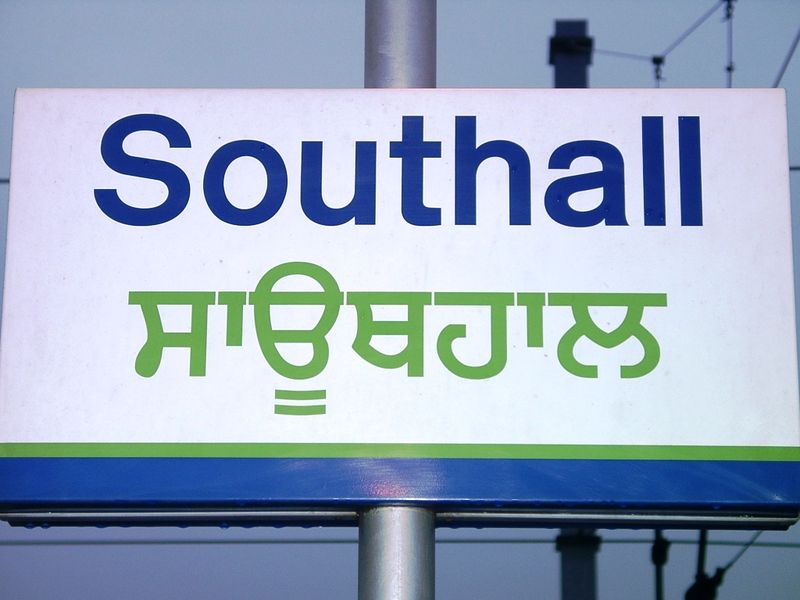 I was in London last week and stopped off in Hounslow, Ealing and Southall to just walk about and visit family. In the past 50 years, Southall has become a huge pass-through and historic cultural and political center for Punjabis, especially Indian and Sikh Punjabis, in London and the greater UK. I visited the neighborhood a few years ago, and I looked forward to returning.
I was in London last week and stopped off in Hounslow, Ealing and Southall to just walk about and visit family. In the past 50 years, Southall has become a huge pass-through and historic cultural and political center for Punjabis, especially Indian and Sikh Punjabis, in London and the greater UK. I visited the neighborhood a few years ago, and I looked forward to returning.
I was a little surprised to see that the neighborhood had changed. In addition to taking on an ever-growing refugee population from Somalia, there seemed to be a growing Sikh Punjabi underclass. Southall, historically, has been populated by working- and middle-class desis, and with that comes a variety of concerns around resource availability, support, language and social services, etc. Multi-family or multi-worker flats and apartments are not uncommon, but I was surprised by the increased concentration of subpar worker housing. Instead of the more prevalent norm of helping out new immigrants by sheltering them and helping them acclimate to London, there seemed to be a small (but growing) formation of Punjabi-run slum housing, similar to the exploitative workers’ ghettoes and communities of New York in the early- to mid-1900s.
I was really distressed by this development; Southall has amazing local institutions that are nationally and internationally reknowned for their civic engagement and dedication. In many ways, it is the face of the UK Sikh community, for better or worse. I’m not naive; I know that our community has deep and complicated internal issues and challenges. How do we begin to address these basic issues of justice, their connection to Sikhi, and what this means for the reputation and behavior of the community as a body? I don’t think we should dictate or micro-manage people’s behavior, but I do think it’s important to have begin to create ways to mediate conversations and norms/attitudes around how Sikh ethics translate into practice.
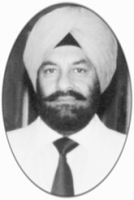 Although a semi-frequent traveler to Canada, I must admit I have never been to the city of Vernon. I have been to the city Mt. Vernon in Ohio. Not a pretty place.
Although a semi-frequent traveler to Canada, I must admit I have never been to the city of Vernon. I have been to the city Mt. Vernon in Ohio. Not a pretty place.
Well in a week that saw the tragic death of Ishmeet Singh and the triumphant victory of Sarika Singh in the UK, I found a personal obituary of note through Google News.
It seems this past week, the Sikh community saw the passing of a “Good Citizen That Made A Difference,” Satwant Singh Dhindsa. His popularity and his commitment to service are expressed in the article.

